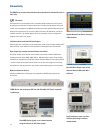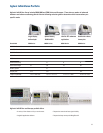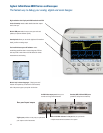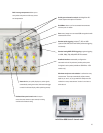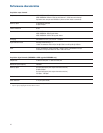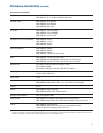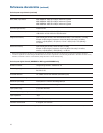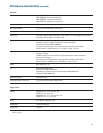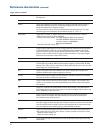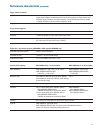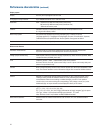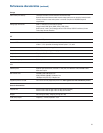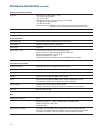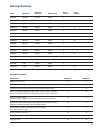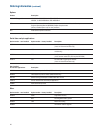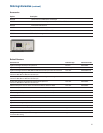
Performance characteristics (continued)
Trigger system (continued)
Selections Edge, pulse width, pattern, TV, duration, sequence, CAN, LIN, FlexRay, USB, I
2
C, SPI, RS-232,
Nth edge burst
Edge Trigger on a rising, falling, alternating or either edge of any source
Pattern Trigger at the beginning of a pattern of high, low, and don’t care levels and/or a rising or
falling edge established across any of the analog and digital channels, but only after a
pattern has stabilized for a minimum of 2 nsec.
The scope channel’s high or low level is defined by that channel’s trigger level. The logic
channel’s trigger level is defined by the threshold for the pod, 0 - 7 or 8 - 15.
Pulse width Trigger when a positive- or negative-going pulse is less than, greater than, or within a
specified range on any of the source channels.
Minimum pulse width setting: 5 ns (MSO/DSO601xA/603xA scope channels)
2 ns (MSO/DSO605xA/610xA scope channels)
2 ns (logic channels on MSO6000A or
MSO-upgraded DSO6000A)
Maximum pulse width setting: 10 s
TV Trigger using any scope channel on most analog progressive and interlaced video standards
including HDTV/EDTV, NTSC, PAL, PAL-M or SECAM broadcast standards. Select either
positive or negative sync pulse polarity. Modes supported include Field 1, Field 2, all fields,
all lines, or any line within a field. TV trigger sensitivity: 0.5 division of sync signal. Trigger
holdoff time can be adjusted in half field increments.
Sequence Arm on event A, trigger on event B, with option to reset on event C or time delay.
CAN Trigger on CAN (Controller Area Network) version 2.0A and 2.0B signals. Trigger on the start
of frame (SOF) bit (standard). N5424A option supports triggering on remote frame ID (RTR),
data frame ID (~RTR), remote or data frame ID, data frame ID and data, error frame, all errors,
acknowledge error and overload frame.
LIN Trigger on LIN (Local Interconnect Network) sync break at beginning of message frame
(standard). N5424A option supports triggering on frame ID.
FlexRay N5432A option supports trigger on FlexRay frame ID or time slot or specific error condition,
along with cycle-base and repetition-cycle filtering.
USB Trigger on USB (Universal Serial Bus) start of packet, end of packet, reset complete, enter
suspend, or exit suspend on the differential USB data lines. USB low speed and full speed
are supported.
I
2
C Trigger on I
2
C (Inter-IC bus) serial protocol at a start/stop condition or user defined frame
with address and/or data values. Also trigger on missing acknowledge, address with no acq,
restart, EEPROM read, and 10-bit write.
SPI Trigger on SPI (Serial Protocol Interface) data pattern during a specific framing period.
Supports positive and negative Chip Select framing as well as clock Idle framing and
user-specified number of bits per frame.
RS-232/UART This application eliminates the need to manually decode bus traffic. Using data captured on
the scope or digital channels, the application provides the ability to easily view the information
sent over a RS-232 serial bus. Display real-time time-aligned decode of transmit and receive
lines. This application also enables triggering on RS-232/UART conditions.
Duration Trigger on a multi-channel pattern whose time duration is less than a value, greater than a
value, greater than a time value with a timeout, or inside or outside of a set of time values.
Minimum duration setting: 2 ns
Maximum duration setting: 10 s
Nth edge burst Trigger on the Nth edge of a burst that occurs after an idle time that you specify. Max edge
count: 65,536.
20



